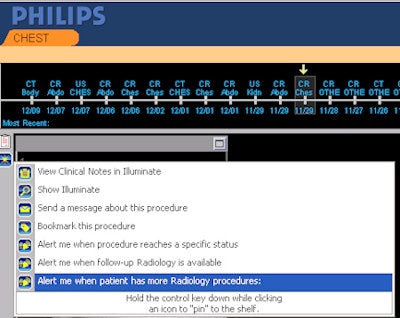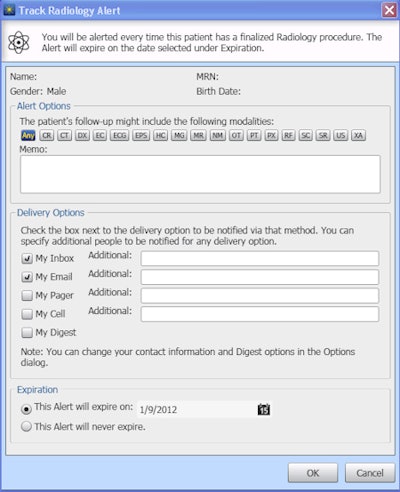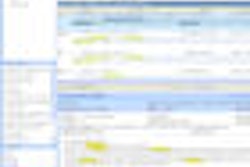
Researchers are reporting their experiences with a PACS plug-in app that allows radiologists to automatically track whether follow-up imaging studies have been performed. The app opens the door for an expanded role in patient management -- and closer relationships with referring physicians.
By creating an electronic "tickler" or reminder file, radiologists can easily monitor their recommendations for follow-up imaging studies, co-author Dr. Mikhail Nekhline, from Henry Ford Hospital, told AuntMinnie.com. The app also allows radiologists to establish a closer rapport with referring physicians and to help alleviate their burden.
"The idea is to make the radiologist at least responsible for the recommendations made in the report, so the same radiologist can read -- or at least review -- the recommended follow-ups or additional studies," he said. "We think helping the clinicians manage the imaging portion of patient follow-up is important for re-establishing [a] more active role in patient management and, in part, will police ourselves against frivolous recommendations. It will also add value to the radiology service, which, in part, may prevent outsourcing of the group to a seemingly 'cheaper' teleradiology solution."
Nekhline and co-author Dr. Safwan Halabi described their experience with the PACS plug-in in a poster presentation at the RSNA 2011 meeting in Chicago.
Utilizing the Illuminate PACS plug-in application (Softek Solutions) with their PACS software (Philips Healthcare), users can tag the studies they want to follow and select a time window for the follow-up. The system then automatically sends an alert when the follow-up study is performed and when the time window for follow-up expires, Nekhline said.
"Now the radiologist should be able to read or review the recommended follow-up, or [he or she] can contact the clinician to inquire on patients if no follow-up is performed," he said.
 |
| Plug-in users can choose to track patient follow-up imaging studies (above) and select the studies and a time window to follow up (below). Images courtesy of Dr. Safwan Halabi. |
 |
Follow-up exam reports can be communicated within the plug-in or via corporate email or SMS. Alerts can also be set to inform users if the follow-up imaging was not performed within a certain time period, Halabi said.
Henry Ford Hospital served as a development partner for Softek and later as a pilot site for Illuminate, Halabi said.
"During the development phase of the plug-in, I recommended the tickler file component be added to provide a mechanism for the radiologist to receive feedback about their interpretations and patient outcome," Halabi said.
Nekhline said the software allows the radiology department to fully comply with the American College of Radiology's recommendations on reporting. The app can also limit legal cost, improve patient care, provide more appropriate reporting to clinicians, increase educational benefits, and add value to clinical services.
"Eventually, we want to create a call center which will manage such communications and will streamline the communication channels between the radiologists and the clinical services," Nekhline said.
A popular feature
The electronic tickler file is likely the second most popular Illuminate feature in the institution's radiology department, following the software's report and image search capability, Halabi said. As with any new technology introduced into a hospital workflow, however, there was a slow and gradual acceptance by radiologists.
The transfer of knowledge of the software from the younger attending physicians and trainees to the rest of the radiology department drove acceptance, Halabi said.
Halabi noted that it's difficult at this point to gauge how the tool has affected the experience of referring physicians in interacting with the radiology department. However, patients and referring physicians indirectly benefit from the tickler file because it allows radiologists to understand the repercussions and outcomes of their interpretations and recommendations, Halabi said.
In the near future, the researchers will document how many radiologists use the tickler file plug-in and how many patients are being tracked at any given time.
"This will help me understand who is using the tool and how to target my training and education resources to the radiologists who are not using the plug-in," Halabi said.




















